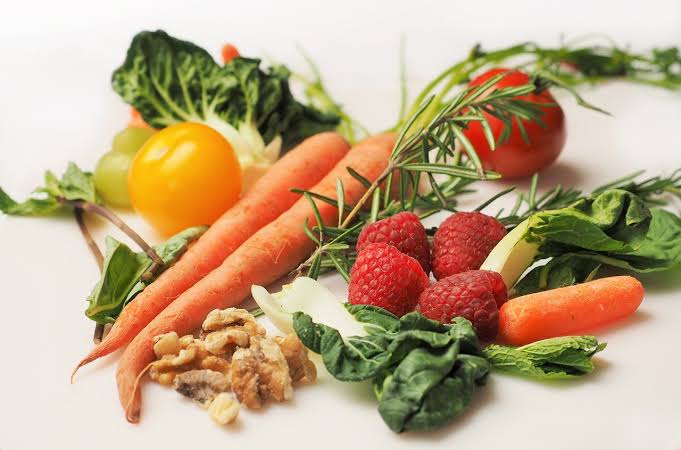Lapsurgery.com.au, The Benefits of Consuming Fruits and Vegetables After Gastric Balloon Installation – Gastric balloon installation is a minimally invasive procedure that aids in weight loss by reducing stomach capacity. After undergoing this procedure, adopting a nutritious diet becomes crucial for maintaining health and maximizing the benefits of the intervention. Incorporating fruits and vegetables into one’s diet post-gastric balloon installation offers numerous advantages that support weight loss and overall well-being.
Nutrient Density:

Fruits and vegetables are packed with essential vitamins, minerals, and antioxidants that are vital for the body’s optimal functioning. Despite their low calorie content, they are rich in nutrients, making them ideal choices for individuals with reduced stomach capacity post-gastric balloon installation. Consuming a variety of colorful fruits and vegetables ensures a diverse range of nutrients, promoting overall health and vitality.
High Fiber Content:
Fruits and vegetables are excellent sources of dietary fiber, which plays a crucial role in digestion, satiety, and weight management. Fiber adds bulk to the diet, promoting feelings of fullness and reducing the likelihood of overeating. Moreover, fiber helps regulate bowel movements, alleviating common digestive issues that may arise following gastric balloon installation. By including ample amounts of fruits and vegetables in their meals, individuals can maintain digestive health and support their weight loss goals effectively.
Low Calorie Density:
One of the primary challenges post-gastric balloon installation is adhering to a reduced-calorie diet without compromising nutritional adequacy. Fruits and vegetables are naturally low in calories but high in volume, allowing individuals to consume larger portions without significantly increasing their calorie intake. This makes them valuable allies in weight management, as they provide a sense of fullness and satisfaction without contributing excessive calories. By prioritizing fruits and vegetables in their diet, individuals can create balanced and satisfying meals that support their weight loss journey.
Hydration and Electrolyte Balance:
Many fruits and vegetables have high water content, which contributes to hydration and helps maintain electrolyte balance in the body. Proper hydration is essential for overall health and well-being, particularly after undergoing a medical procedure like gastric balloon installation. Additionally, fruits and vegetables provide essential electrolytes such as potassium, magnesium, and calcium, which play crucial roles in various physiological processes. By incorporating hydrating fruits and vegetables into their diet, individuals can support optimal hydration and electrolyte balance, promoting overall health and recovery.
Variety and Flavor:
Eating a wide range of fruits and vegetables adds diversity and excitement to meals, preventing dietary monotony and boredom. Experimenting with different fruits and vegetables introduces new flavors, textures, and culinary possibilities, making the eating experience enjoyable and satisfying. Additionally, the vibrant colors of fruits and vegetables signify the presence of various phytonutrients, which offer numerous health benefits, including antioxidant and anti-inflammatory properties. By embracing a colorful and diverse array of fruits and vegetables, individuals can enhance the nutritional quality of their diet and support their long-term health and well-being.
Satiety and Appetite Control:
Fruits and vegetables contain a combination of fiber, water, and nutrients that promote feelings of fullness and satisfaction after meals. This satiating effect helps individuals manage their appetite and reduce the likelihood of overeating, which is especially important after gastric balloon installation. By including ample servings of fruits and vegetables in each meal, individuals can effectively control their hunger levels and maintain a sense of satisfaction throughout the day, ultimately supporting their weight loss efforts.
Blood Sugar Regulation:
Many fruits and non-starchy vegetables have a low glycemic index, meaning they cause a gradual and steady increase in blood sugar levels. This can be beneficial for individuals with insulin resistance or diabetes, as it helps prevent spikes and crashes in blood glucose levels. By choosing fruits and vegetables as primary sources of carbohydrates, individuals can better manage their blood sugar levels and reduce their risk of developing complications related to diabetes or metabolic syndrome.
Gut Health Promotion:
The fiber found in fruits and vegetables acts as a prebiotic, nourishing the beneficial bacteria in the gut and promoting a healthy microbiome. A balanced and diverse gut microbiota is associated with numerous health benefits, including improved digestion, enhanced immune function, and reduced inflammation. By consuming a variety of fruits and vegetables regularly, individuals can support the diversity and abundance of beneficial gut bacteria, leading to better overall gut health and digestive function.
Disease Prevention:
A diet rich in fruits and vegetables has been linked to a lower risk of chronic diseases, including heart disease, stroke, certain cancers, and metabolic disorders. The abundance of antioxidants, vitamins, and phytonutrients found in fruits and vegetables helps combat oxidative stress, inflammation, and cellular damage, which are underlying factors in many chronic conditions. By prioritizing fruits and vegetables in their diet, individuals can reduce their risk of developing these diseases and improve their long-term health outcomes.
Sustainable and Environmentally Friendly:
Choosing to consume more fruits and vegetables can have positive implications for the environment and sustainability. Plant-based diets generally have a lower environmental footprint compared to diets high in animal products, as they require fewer resources such as water, land, and energy to produce. By shifting towards a diet centered around fruits and vegetables, individuals can contribute to environmental conservation efforts and promote a more sustainable food system for future generations.
Closing
The consumption of fruits and vegetables offers a myriad of benefits for individuals following gastric balloon installation, ranging from enhanced satiety and appetite control to improved gut health, disease prevention, and environmental sustainability. By making fruits and vegetables a focal point of their dietary choices, individuals can optimize their nutrition, support their weight loss journey, and cultivate long-term health and well-being.

